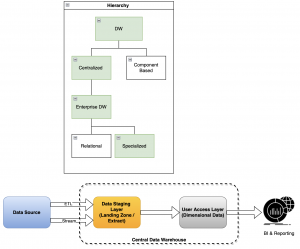|
|
|
|
|
|
Compliance and Regulatory
|
Data Citizenship
|
How can a Cloud-based solution achieve regulatory compliance with respect to data storage locality.
|
Yes
|
AWS Tags (Location Tags for the resources)
|
|
Cryptographic Erasure
|
How can a dataset be reliably and securely erased after it was stored in the Cloud. If we replicate the data in multiple regions, then this needs to be addressed
|
No
|
AWS KMS (Ensure data is encrypted in rest and KMS manage the key for it)
|
|
Shared Responsibility Model
|
How can a Cloud services consumer effectively manage their Cloud application legal and regulatory compliance
|
Yes
|
Usage of AWS managed services
|
|
Compliant Data Transfer
|
How can data be transferred for processing to other parties in potentially different jurisdictions while staying in compliance with legal and regulatory requirements
|
Yes
|
AWS Tags (Location Tags for the resources)
When we use third-party functionalities which is often exposed through an APIs, we need to adhere to data transfer guidelines
|
|
Data Retention
|
How long is personal information retained
|
Yes
|
Lambda function to automate the data clearing process
|
|
Data Lifecycle
|
How to efficiently and securely manage data lifecycle in the Cloud
|
Yes
|
AWS Data Lifecycle Manager
|
|
Intentional Data Remanence
|
How can data in the Cloud be protected from accidental or malicious deletion
|
Yes
|
RDS data replication/redundancy
|
|
Identification, Authentication and Authorization
|
Multi-Factor Authentication
|
How to simply, yet securely authenticate physical users of Cloud-based applications
|
Yes
|
AWS Cognito with MAF
|
|
Federation (Single Sign-On)
|
How to authenticate with customer provided user identities
|
Yes
|
AWS Cognito with AWS SSO
|
|
Access Token
|
How to control human or machine user access to Cloud APIs
|
Yes
|
AWS Security Token Service with Cognito
|
|
Mutual Authentication
|
How to establish identity of parties in a Cloud communication channel. Without proper authentication between communicating parties, man-in-the-middle attacks are possible
|
Yes
|
AWS Client VPN, AWS TLS/SSL certificates via Certificate Manager
|
|
Secure User Onboarding
|
How to securely perform initial registration of Cloud application users
|
Yes
|
Define a secure onboarding process / AWS Customer on boarding process
|
|
Identity and Access Manager
|
How to securely and effectively manage a user database and provide authentication and authorization functionality in a Cloud application
|
Yes
|
AWS IAM & Cognito
|
|
Per-request Authentication
|
How to continuously prove the identity of the user when they perform sensitive operations
|
Yes
|
Cloud Watch with events and notifications. Tools monitoring the usage activities of user from the start till the end of usage session. JWT token validation throughout the request life cycle and log user activities. Detect any abnormal activities via log analysis
|
|
Access Control Clearance
|
How to enforce access and usage control policies for different types of authentication
|
Yes
|
Implement a central Authorization module and validate the access in FE and BE. (Role base access)
|
|
Secure Development, Operation and Administration
|
Bastion Server
|
How to access Cloud resources without exposing them directly to the Internet
|
Yes
|
Bastion Host outside the Firewall
|
|
Automated Threat Detection
|
How to detect network attacks on Cloud internet endpoints
|
Yes
|
AWS Guard Duty
|
|
Economic Durability
|
How to establish and maintain availability of the Cloud services in the face of distributed denial-of-service attacks
|
Yes
|
AWS WAF & Cloud Watch
|
|
Vulnerability Management
|
How to detect and respond to found vulnerabilities
|
Yes
|
Use external tools
|
|
Privacy and Confidentiality
|
End-to-End Security
|
How to communicate a message between two parties so that its confidentiality is protected across all components in the Cloud communication channel
|
Yes
|
AWS KMS and Certificate Manager (security guarantees are needed for data in transit and at rest)
|
|
Computation on Encrypted Data
|
How to outsource data for computation to a Cloud service without disclosing it in the process
|
No
|
Cloud provider maintains the keys, we need to fully trust the cloud provider
|
|
Data Anonymization
|
How to remove personal identifiers from datasets to protect privacy, while keeping the datasets still valuable for processing
|
Yes
|
AWS Athena, Cloud Watch and Lambda to automate a scan
|
|
Processing Purpose Control
|
How to ensure data is used or processed in accordance with its original intended purpose
|
No
|
Automated tool to trace and audit the usage of it.
|
|
Secure Architecture
|
Virtual Network
|
How to connect components of a Cloud application architecture without unnecessarily exposing them to the Internet
|
Yes
|
AWS VPC
|
|
Web Application Firewall
|
How to protect web API endpoints from unauthorized access and abuse
|
Yes
|
AWS Firewall
|
|
Secure Element
|
How to securely provide and strongly protect identity of IoT devices or external services
|
Yes
|
Using a unique identity, PKI should be the foundation of any IoT security strategy / external service
|
|
Secure Cold Storage
|
How to protect the availability of large amounts of data securely and cost-effectively
|
Yes
|
AWS Glacier for Cold storage with encryption
|
|
Certificate and Key Manager
|
How to securely and effectively create, provision and revoke certificates and keys for securing data at rest and in transit
|
Yes
|
AWS KMS and Certificate Manager
|
|
Hardware Security Module
|
How to best protect the cryptographic secrets owned by Cloud tenants while still enabling Cloud processing infrastructure to compute on the tenant data
|
No
|
CloudHSM
|
|
Secure Auditing
|
How to record and report security-related behavior in an operating Cloud system
|
Yes
|
AWS security audit check list
https://aws.amazon.com/blogs/security/auditing-security-checklist-for-aws-now-available/
|
